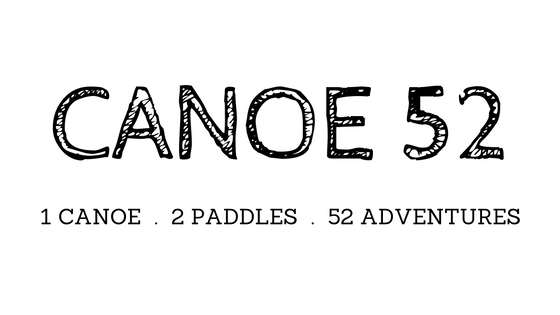
Getting to the River
Our initial plan was to paddle the Farmington River. We had high hopes that some snow melt would swell the river enough for a canoe trip. We headed up to Rainbow Reservoir in Windsor, Connecticut to see what the water was like. With a canoe strapped to the top of the car we barreled down the muddy, snow packed road. When we reached the bottom of the hill we encountered ice fishermen enjoying the thick layer of ice coating the reservoir. Boy, did we have a good laugh. We must have looked pretty ridiculous with a canoe on our car!
We went with our ‘ole stand by paddle: The Connecticut River
The Connecticut River was the best option. One of our favorite local paddles is from Enfield to Windsor, Connecticut. The boat launches are close to our house, the Enfield “rapids” add some adventure to the typically flat paddle, not to mention there’s great history along the way. It’s also quiet because the water is so shallow. Motorized boats have no chance of making it through a majority of this stretch of river.
In Enfield there was a thick enough layer of ice that we could easily walk out on it and bounce around a bit. Of course this meant carrying the canoe to the edge in order to loaded in. Rigby and I took the center of the boat, Chris at the bow (front) and Tony at the stern (back). Tony gave us a push and hopped in as the ice caved a bit under us.

The Canadian Geese congregated, creating a symphony of horns. When they recognized us on the water, they lifted off in a flutter that echoed around us. The day was sunny and the paddle was smooth. Keep in mind that the Connecticut River is a tidal river so if you don’t time your paddle right, there’s a possibility that you’ll be fighting the current the whole way. The tide was in our favor for this trip.
Paddling the Enfield Rapids
We had some fun in the Enfield Rapids. Tony will share more about the history of the rapids and the dam that crossed the Connecticut River and the Windsor Locks Canal that runs alongside the river in this area. The rapids are Class I with a good stretch of quick water that follows. Not interested in taking the risk of paddling over? Check out the Connecticut River Paddlers Trail for tips on how to portage around the rapids. Our preference is sticking to our right hand side, paddling close to the lookout platform. After a stretch of quick water, you have some time to drift or paddle leisurely before hitting another small set of rapids near Kings Island. We went to the right of the island and hit a pretty choppy set of rapids.

Since the Connecticut River is so shallow on this stretch you have to keep an eye out for rocks. They’re everywhere. In the summer we enjoy the sandy beaches and sandbars that sprinkle the river. We hopped out at one of the islands to let Rigby run free. She managed to roll off the island and into the water during an intense play session.
Our favorite part of the paddle, the mouth of the Farmington River
The sun moved quickly towards the horizon so we did the same. One of our favorite parts of this paddle is paddling around the island on the right side of the river where the Farmington River meets the Connecticut River in Windsor. It’s peaceful and it gets you away from the jet skis and motorboats during the summer. It can be pretty bony as you approach the Farmington River. The river bottom is pebbly and the water is usually very shallow. We were lucky and paddled right over it without anything scaping the bottom of our boat. Thank you, snow melt!

We finished up our paddle just before the sun went down and the tide changed directions. This was a successful first for 2017. Winter padding is so invigorating. It’s a little chilly, but I love reconnecting with nature for more than a walk between work and my car or the 2 hours I spend shoveling during a snowstorm. You’re in a boat, on the water, with nothing to do but paddle forward.




